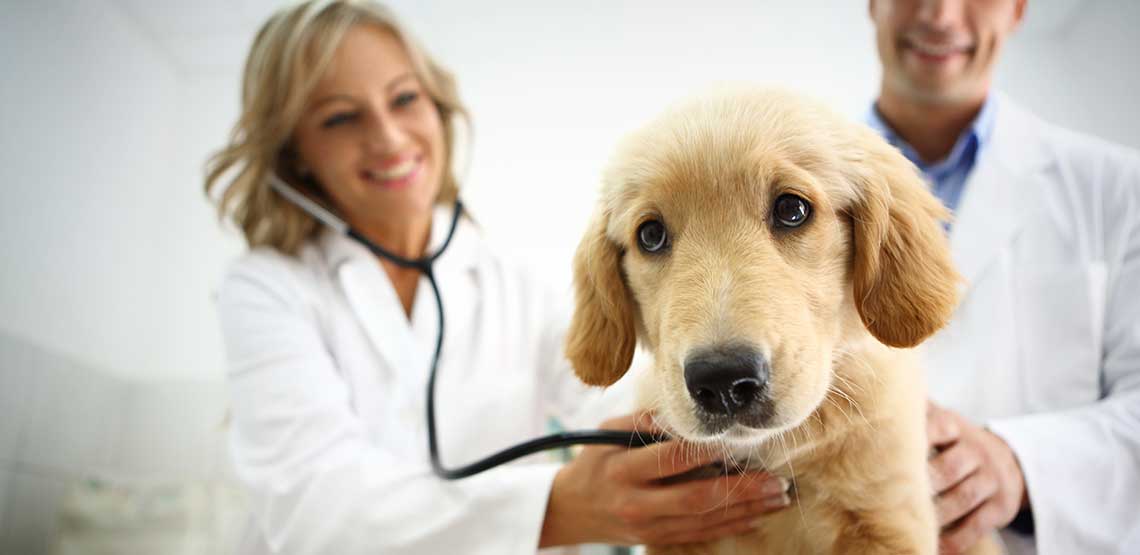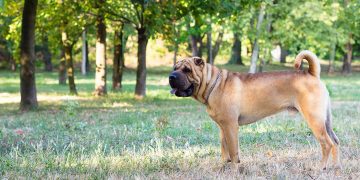Risks and Prevention of Parvo in Dogs
Parvo, short for parvovirus, is one of the most serious illnesses a dog can get. Parvo in puppies is especially deadly.
Canine parvovirus is caused by infection and is highly contagious. All dogs are at risk for developing the disease. Puppies less than four months old and dogs that have not been vaccinated against the virus are at increased risk for infection. Canine parvovirus infection occurs worldwide in domestic dogs and other members of the dog family. The rate is higher in animal shelters, pet stores and breeding kennels. Parvo can affect dogs at any age. Severe infection is most common in puppies between six weeks and four months old.
There are two forms of parvo in dogs: intestinal and cardiac. The cardiac form of parvo is the least common form, and the most deadly. The virus directly attacks the muscles of the heart, then attacks the blood vessels, leading to hemorrhaging. The intestinal form of dog parvo is the most common form. It's contracted orally through infected feces, soil, etc.
Following ingestion, the virus multiplies and spreads to the bloodstream and throughout the body. Beginning 34 days after infection and continuing for about 57 days, the virus is shed in the dog's feces and can be transmitted to other dogs.
Some dogs that are infected with parvo do not develop symptoms. In dogs that do, symptoms usually occur within 10 days of exposure to the virus. Always be on the lookout for parvo symptoms, especially if your puppy is over 10 weeks old.
Symptoms of Parvovirus
The most common symptoms of canine parvo are:
- Bloody dog diarrhea (often severe)
- Fever
- Lethargy (lack of energy)
- Loss of appetite
- Malaise (discomfort associated with illness)
- Rapid weight loss
- Vomiting
Canine parvovirus is often fatal in puppies. Sometimes, puppies collapse and die without showing prior signs of infection. In any dog, parvo can cause death within 23 days of the onset of symptoms, so it is important to seek veterinary care as soon as possible.
You May Also Like:
Related Search Topics (Ads):
Treating Parvovirus
Puppies infected with parvo have a guarded prognosis; older dogs that receive prompt medical treatment usually survive. Of course, severe infection often has a poor outcome.
In most cases, hospitalization is required. Treatment usually involves IV fluids, anti-nausea medications and antibiotics to prevent secondary infections because the dog's immune system will be severely weakened. Treatment for parvo is not always successful, even when it is started promptly. In dogs that recover from infection, improvement may be seen in two or three days. Once a dog can finally begin keeping its food and fluids down, IVs are gradually reduced. Very bland dog food is then offered.
Preventing Parvovirus
Prevention is the best policy. It is not always through the lack of prevention that animals contract this disease, but it is necessary to take these steps to help prevent the spread of parvo.
Canine vaccination is strongly recommended. However, vaccination does not ensure protection from the disease in all cases. Puppies should be vaccinated at eight weeks of age, and then every three or four weeks until four months of age. Puppies who are 16 weeks or older should receive three vaccinations. It is important to make sure all dogs are up to date with immunizations.
Good hygiene is also important to prevent infection. Parvo is a resilient virus and can live on some surfaces for more than a year. A bleach solution is necessary to kill the virus.
Finally, exercise care when exposing a puppy or dog to areas where other dogs congregate, such as parks, obedience classes, kennels and grooming facilities. Owners should prevent dogs from coming into contact with the feces of other dogs and should properly dispose of their own dog's feces. Proper disposal of waste matter can help prevent the spread of the parvovirus.
Infected dogs should be isolated to prevent the spread of infection. Following parvo infection, dogs may be contagious for up to two months, so keep the dog isolated until you can be sure it won't infect other animals.

